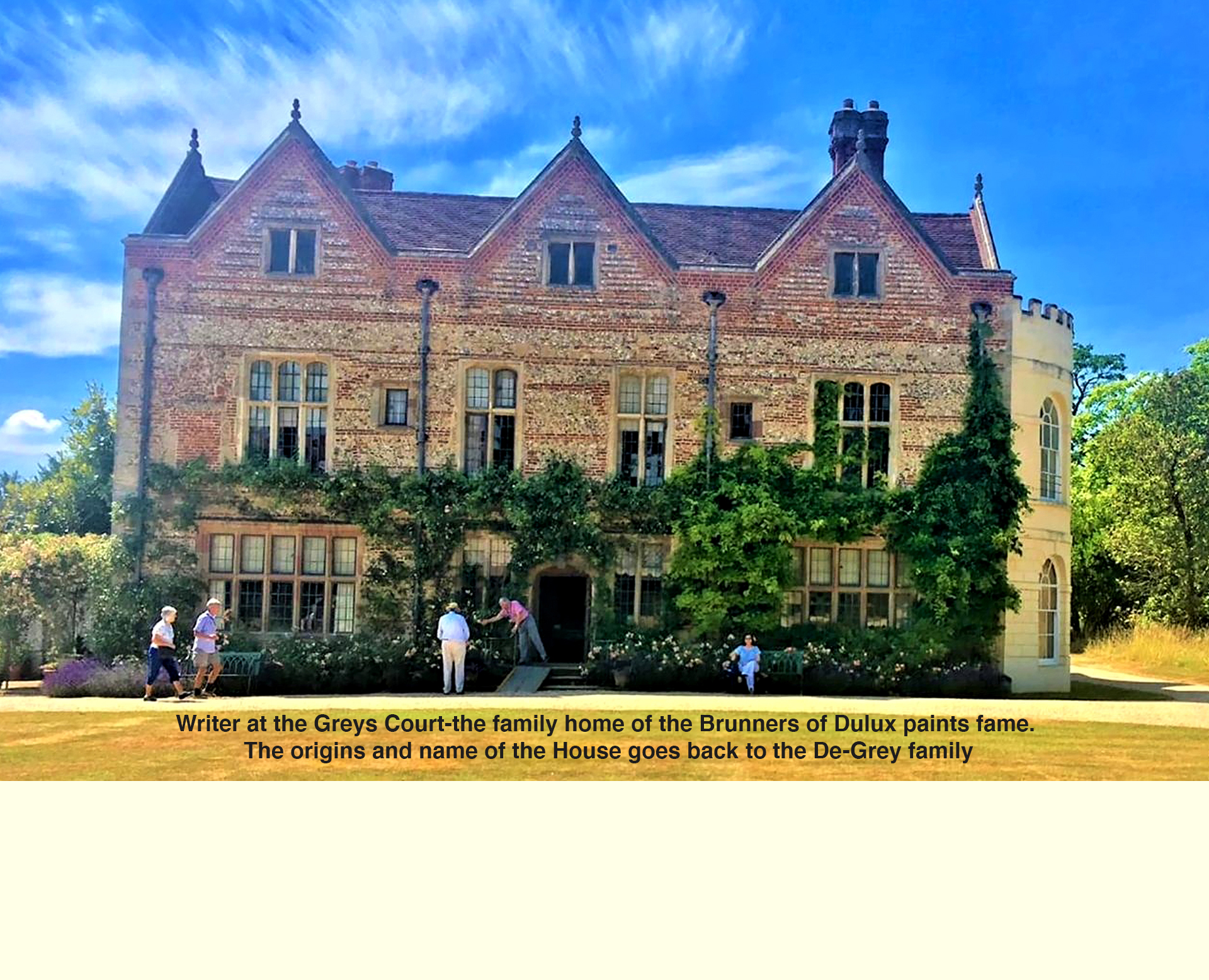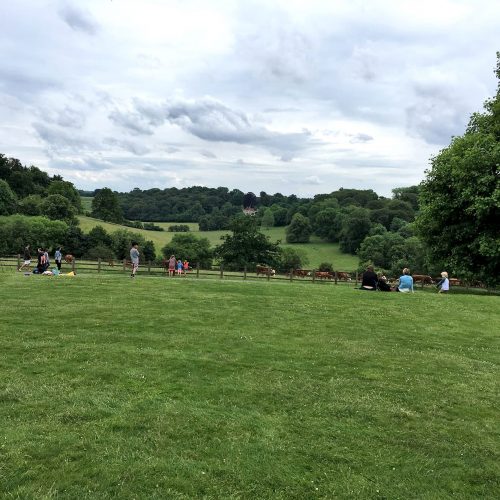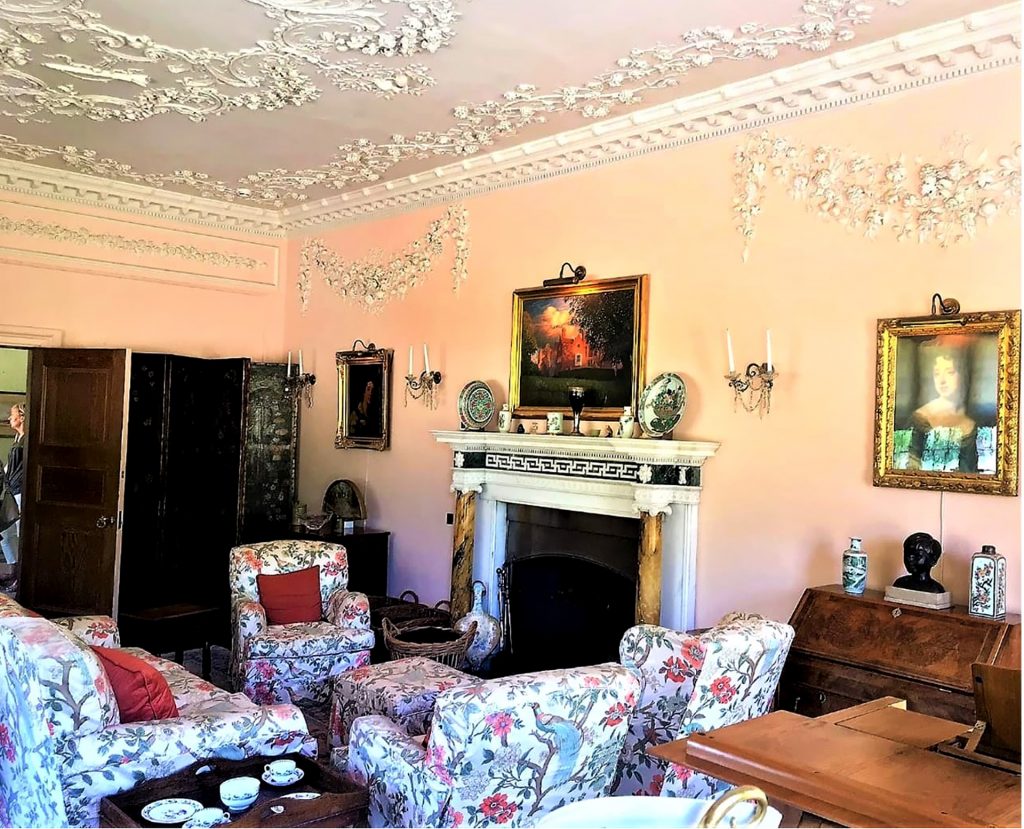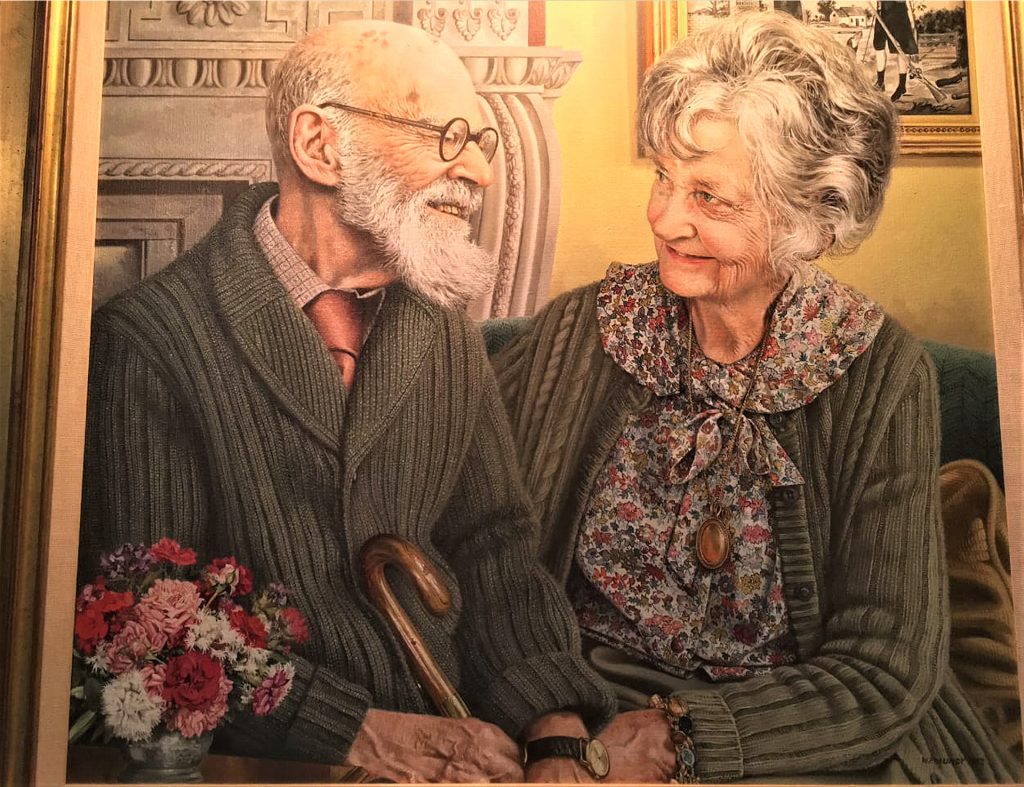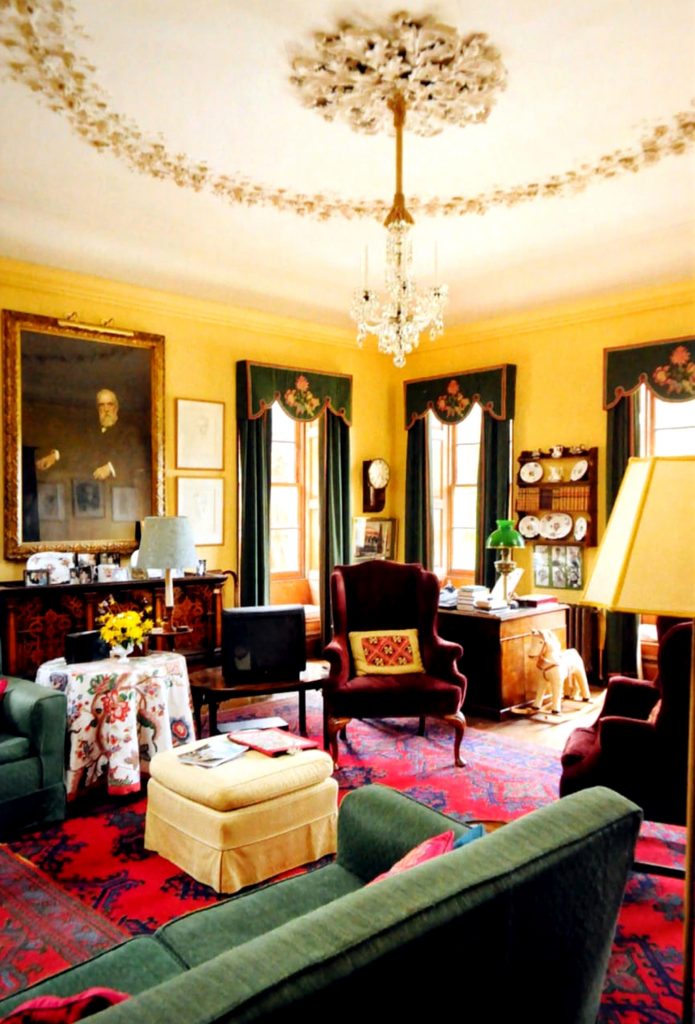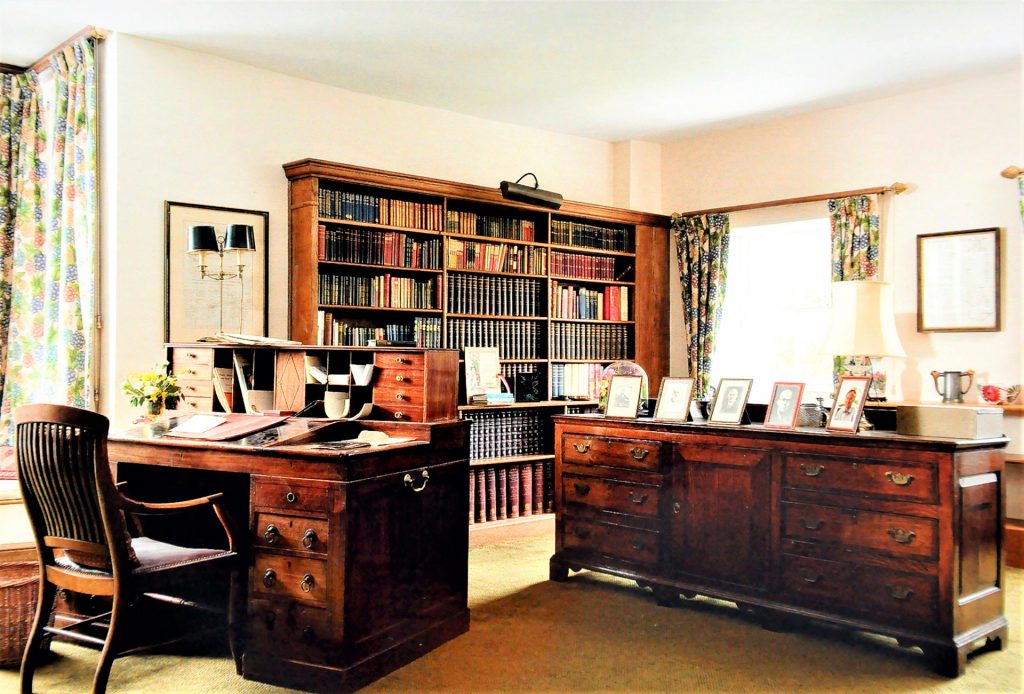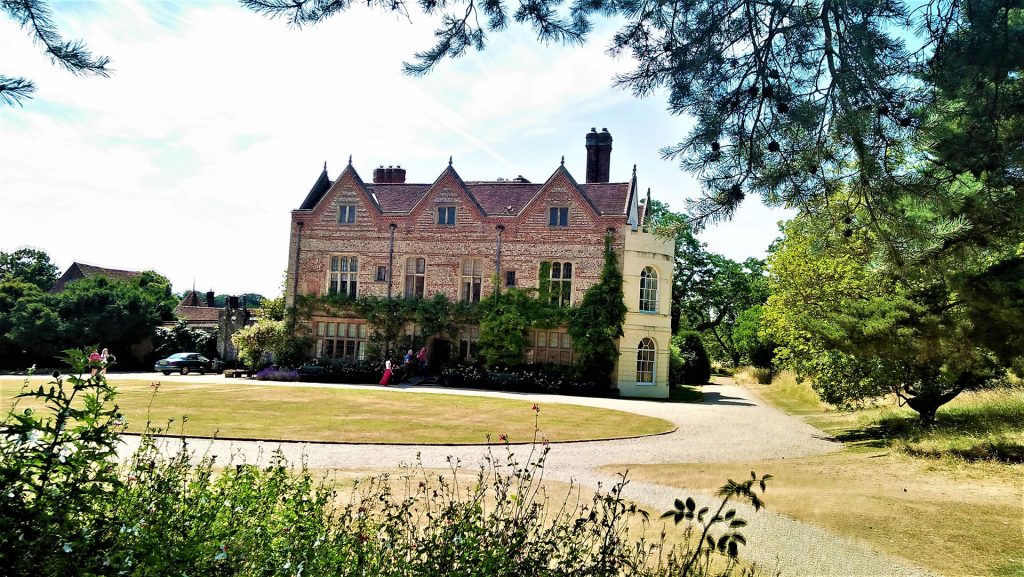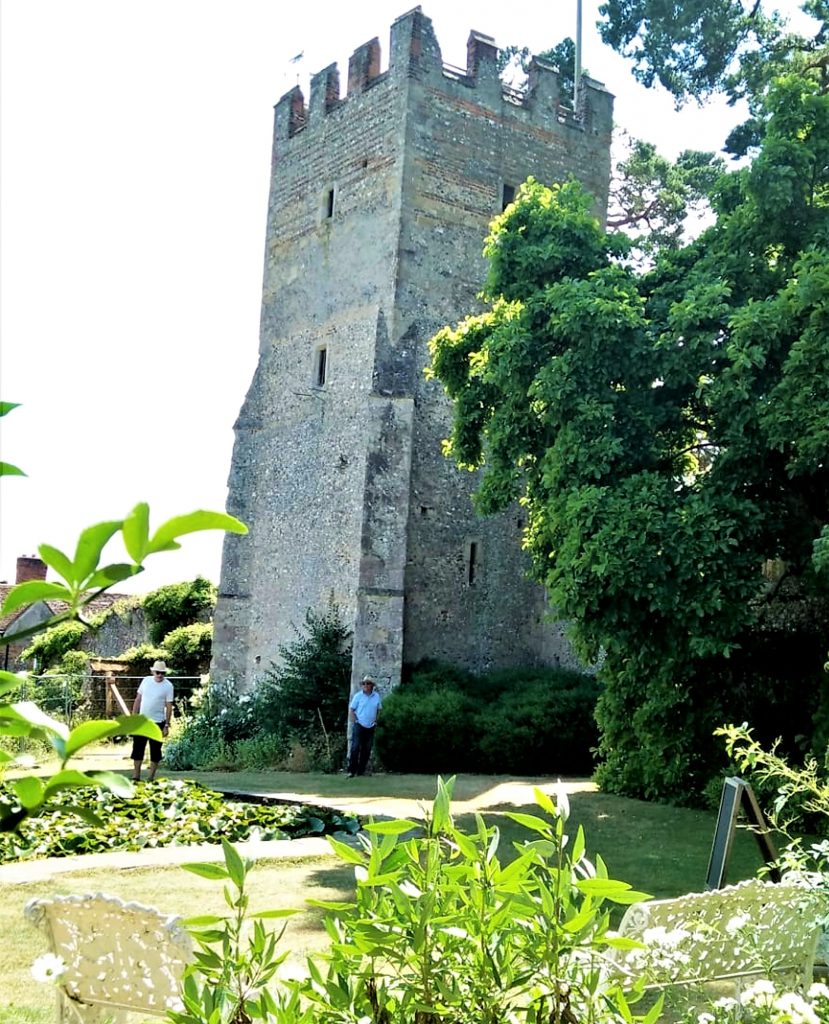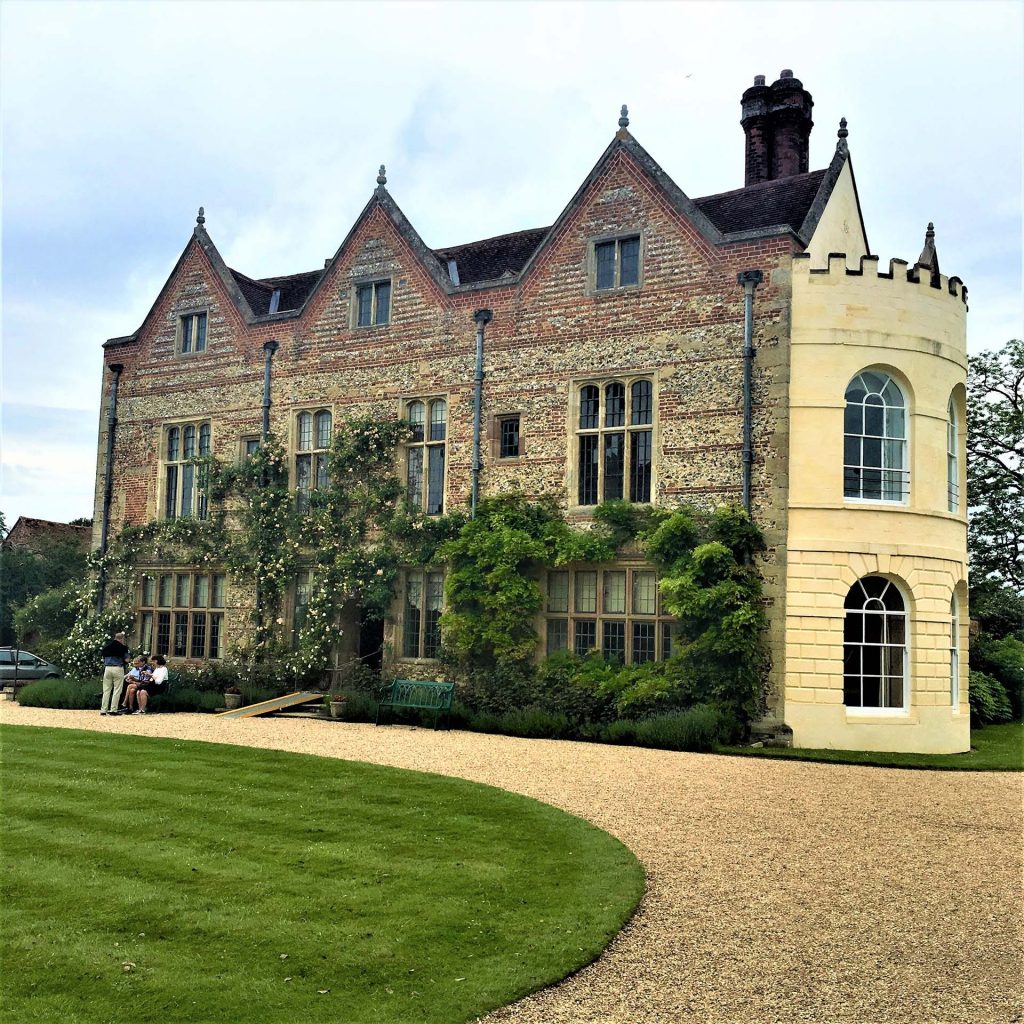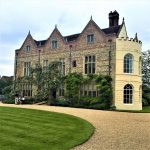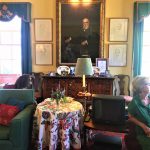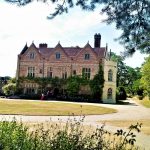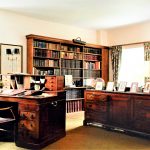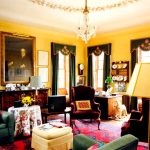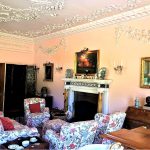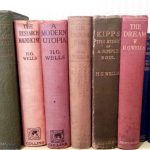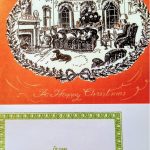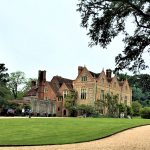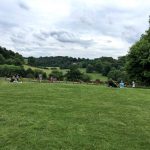Greys Court – from a Castle to a Family home
Walking past panoramic emerald vistas – green meadows meeting sapphire sky, we approached the Greys Court family home. This was at one point of time a Castle, maybe a thousand years ago! Crunching ahead on the gravel path we caught the first view of the three storey brick and stone Elizabethan house from late 16th century! Memory jog into the past brought up the names of the powerful and wealthy De Grey family who lived here first and the place takes their name – Greys Court as we call it today.
Historical Milieu
We walked along the Oval lawn leaving the faraway11th century walls and Great Tower ruins on our right for a later visit. On the way I recalled the antiquity of the Greys court that was the family home of the De-Greys till the 15th century when their daughter and descendant Alice De Grey married Lord William Lovell in 1455. They built the first large two storey structure at the site of the present house.
By 1514 Greys Court was granted to the prestigious Knollys family, a long standing member of the Henry VII’s court. Almost two centuries later, in 1724 Greys court had wealthy Baronets – Stapletons as its new owners, again by a nuptial bond. In 1934, the house was sold to the mother of writer Ian-Fleming of the James Bond fame! Soon, the happy Brunner family took over the ownership of the House.
The Entrance Hall
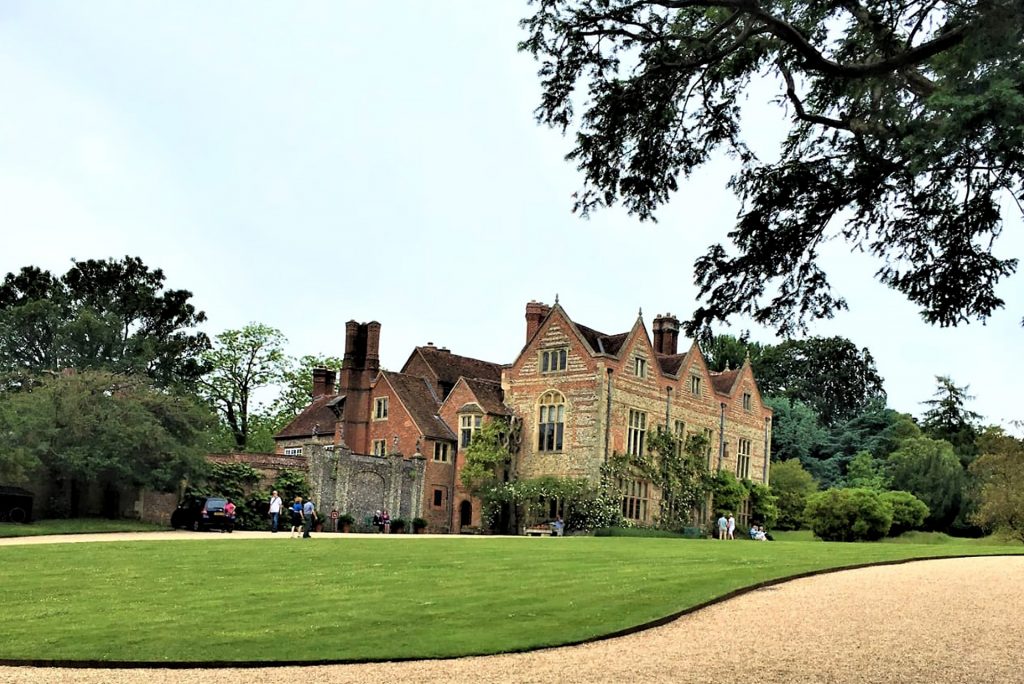
Car park entrance view across the Oval Lawn,of the historic complex of Greys Court spanning 11 centuries!
We entered the loving home of the Brunner family who came to Greys Court in 1937 and lived here till 2003, even after it was handed over to the National Trust. They restored the house to its pre-Victorian state that had been significantly altered by the previous owner Mrs Evelyn Fleming. The Entrance Hall held two glass cabinets filled with English and Swiss ceramics from 18th century and we walked around a Playing Cards table from the 1584 to reach them. Both of them were from the Brunners ancestral collection.
Simplicity- Dining room
Splendid plasterwork ceiling, 18th century elegant Drawing room of the Brunner familyNext we sauntered into the Dining room on our left, with a simple table and Windsor chairs. We noticed it was well lit due to the addition of the large attractive window created on the east wall in the 19th century. A volunteer pointed out a Swiss Chest from1617, decorated with Brunner – Arms and Fountain emblem as ‘brunnen’ is German for Fountain!
Garden view Drawing room
Then we strolled into the marvellous garden view Drawing room in pastel pink whose high ceiling was an addition by one of its owners Thomas Stapleton in 1758. The rococo style white plasterwork on the ceiling and walls is fabulous. The 18thcentury marble Fireplace has a splendid painting of the Greys Court commissioned by Lady Brunner.
Memories of Christmas
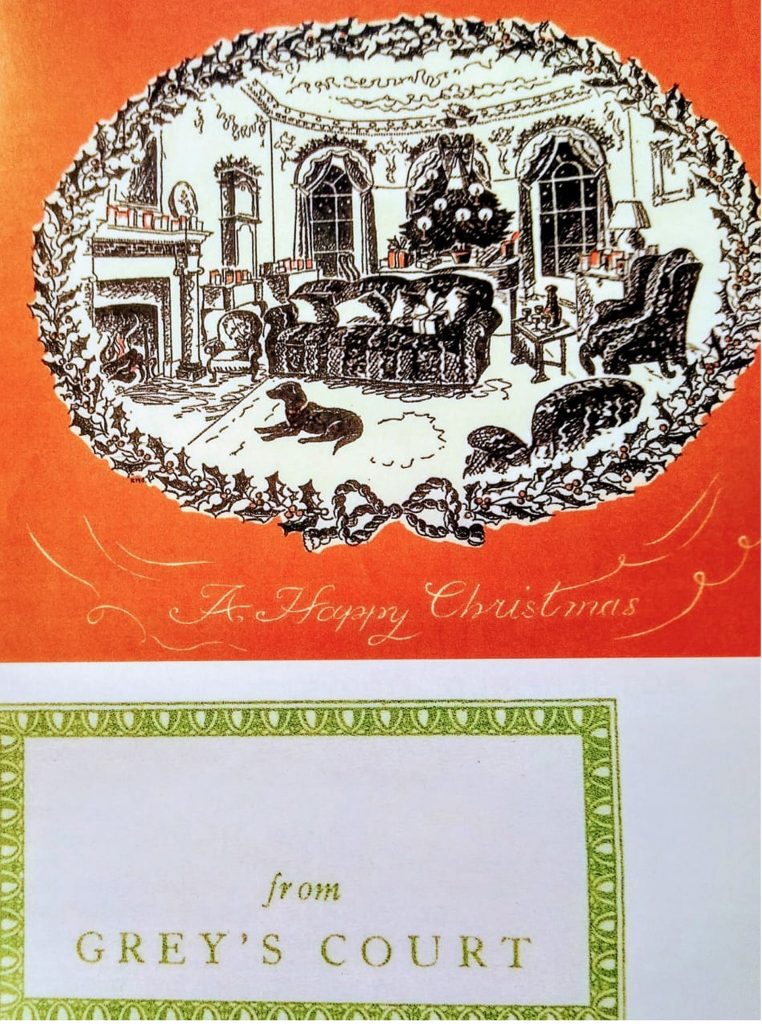
Christmas invitation card – traditional,extravagant Christmas celebrations were held in the Greys Court during the times of the Brunner family
Whilst in the Drawing room we were told about the charming and extravagant Christmas celebrations in the Greys Court during the times of the Brunner family. I could imagine the glittering gold-red-white beautifications on the Christmas tree along with the Holly and Ivy decorations on the walls, the Robin-cards on the mantle-shelf, the Crib, the Christmas lunch, watching the Queen’s message on Television followed by piano and harp music in the Drawing room and finally the afternoon concluding in the most perfect way with the Lady Brunner’s Christmas cake with China tea from famous tea-makers- Fortnums!
Moving through the Inner Hall towards the Schoolroom we came across an old-age portrait of Sir Felix and Lady Brunner- a soul stirring portrayal of love!
Meeting Sir John Brunner in the Schoolroom
Subsequently, we entered another beautiful room with comfortable sofas and chairs called the Schoolroom after the ten children affected by the World War-II were brought here by the Brunners and they studied alongwith the Brunner boys. This room was a library in the 18th and 19th century, thereafter it was transformed into a Schoolroom and finally was used by Lady Brunner as her study. I noticed her Desk’s chair embroidered with a needlework view of Greys Court.
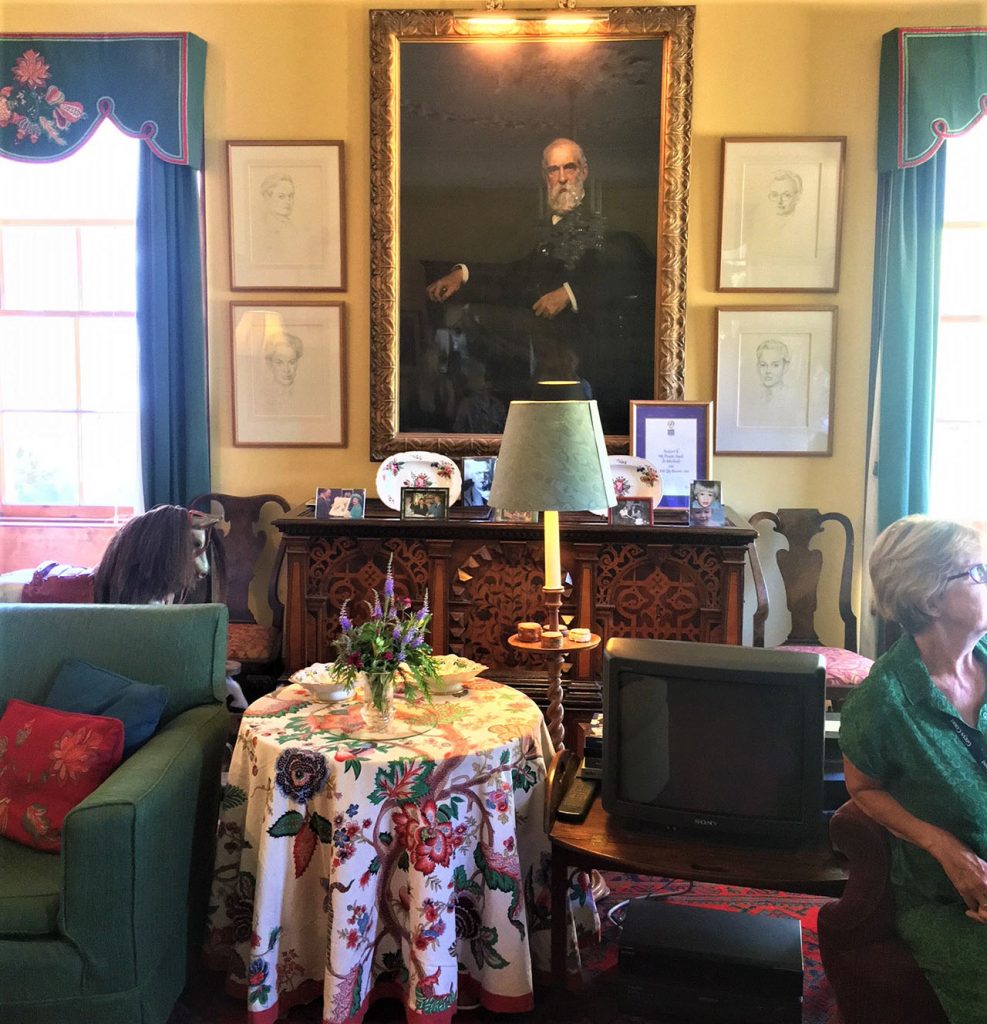
Schoolroom during World War-II, Lady Brunners Study at Greys Court with portrait of Sir John Brunner
The distinguished portrait of eminent Victorian Sir John Brunner dominated the room gazing each visitor in the eye! A volunteer informed that Sir John Brunner formed the Brunner- Mond Company in partnership in 1873 that grew to be the wealthiest British chemical company. It went on to be the ICI – Imperial Chemicals Company that does the Dulux paints besides much more. We felt national pride to remember the present name of Brunner-Mond Company since 2011 is Tata Chemicals Europe- part of the India based Tata group!
A Library to browse
We climbed up an 18th century staircase with a 16-17th century Swiss stained-glass window to reach the Library set up by Felix Brunner in a room of Greys Court that goes back to the 17th century. Wow! What well preserved historical facts! I enjoyed browsing through the intellectual collection of Sir Felix’s library- books ranging from politics to gardening. I spotted few well-read popular titles- Passage to India & A Room with a View by E M Forster, The Dream and many more novels by HG Wells to state a few.
Bedrooms and Kitchen
We saw the simple but elegantly furnished Brunner bedrooms and then proceeded downstairs to the cosy well lit Kitchen. I could imagine jams and marmalades being cooked here from fresh fruit by Lady Brunner, every summer and autumn, this exuded warmth in the atmosphere! A volunteer pointed out several medieval parts- exposed posts surviving from 1450’s timber frame – Larder door with ancient metal lock and an old arched Fireplace, to us. We were updated that some of these parts were from the Timber-house of the Lovell dynasty! From the Kitchen we stepped into the gardens outside.
The Gardens of Discovery
I recalled reading that since centuries there was picturesque parkland around the house and the garden which was additionally proven by the 18th century Watercolour paintings. We had recently caught the quaint view through the windows of the Greys Court house. The large Garden that we were strolling through was an addition by the Brunner family who creatively included the Great Tower, ancient wall, series of gardens with doors, garden furniture and planted more trees to create this delightful area drenched in greens! We walked along the other side of the Oval lawn towards the ruins of the Great Tower. The Oval lawn has foundations of walls and two gate- houses dating from mid14th century. Keeping their preservation in mind we kept to the gravel paths around the Oval lawns.
The Tower Garden
We entered the Tower Garden named so, as it lay quietly in the shadow of two Greys Court’s historic towers, through a narrow wrought-iron gate and were surprised to see the large flower-filled garden inside! The ancient wall was constructed by the De Greys who lived here since the 11th century. Next we moved into Lady Brunner’s ‘White Garden’ that she lay in 1938 by choosing a scheme of white flowering plants which rendered it a serene ambience. Then there is lots to walk around- the Rose Garden, the esteemed Wisteria Walk, the medieval Kitchen Garden, the ornamental Cherry garden, the Knot Garden, the Orchard and the Chinese bridge; each having a story of their own.
The Donkey’s Wheel and Cowshed tearoom
We approached the medieval 200 feet deep Donkey’s Wheel on the way to the Tearoom. It had been used since 1586 to draw water and is a rare example of its mechanism that is surviving to this day! Soon after while enjoying the tea I noticed a message on one of the Tearoom walls which read that it was the Cowshed of the yesteryears which housed Sir Felix’s and Lady Brunner’s prize winning herd of Guernsey cattle!
While heading back to London the appropriateness of Lady Brunner’s message reverberated in my mind that she hoped that Greys Court would continue to attract archaeologists and gardeners alongwith families as a haven of peace and quietness away from pressures of present day living! And it was truly so what she envisioned years ago…
- Old-age portrait of Sir Felix and Lady Brunner- a soul stirring portrayal of
- Spring look-Medieval to modern- 16th century stone Elizabethan style – Greys Court
- Schoolroom during World War-II, Lady Brunners Study at Greys Court with portrait of Sir John Brunner
- 11th century to now- The Great Tower
- A long shot of Greys Court from the Medieval Tower and beautiful gardens surrounding it
- Greys Court’s historic early- medieval tower as seen from the White Tower Garden of year 1938
- Sir Felix Brunner’s library in a 17th century room in Greys Court
- Schoolroom- Study of Lady Brunner
- Splendid plasterwork ceiling, 18th century elegant Drawing room of the Brunner family
- Popular novels at Greys Court
- Old-age portrait of Sir Felix and Lady Brunner- a soul stirring portrayal of
- Car park entrance view across the Oval Lawn,of the historic complex of Greys Court spanning 11 centuries!
- Panoramic view outside early medieval ruins and beautiful family home -Greys Court
Photo courtesy: Sh. Arvind Chopra
